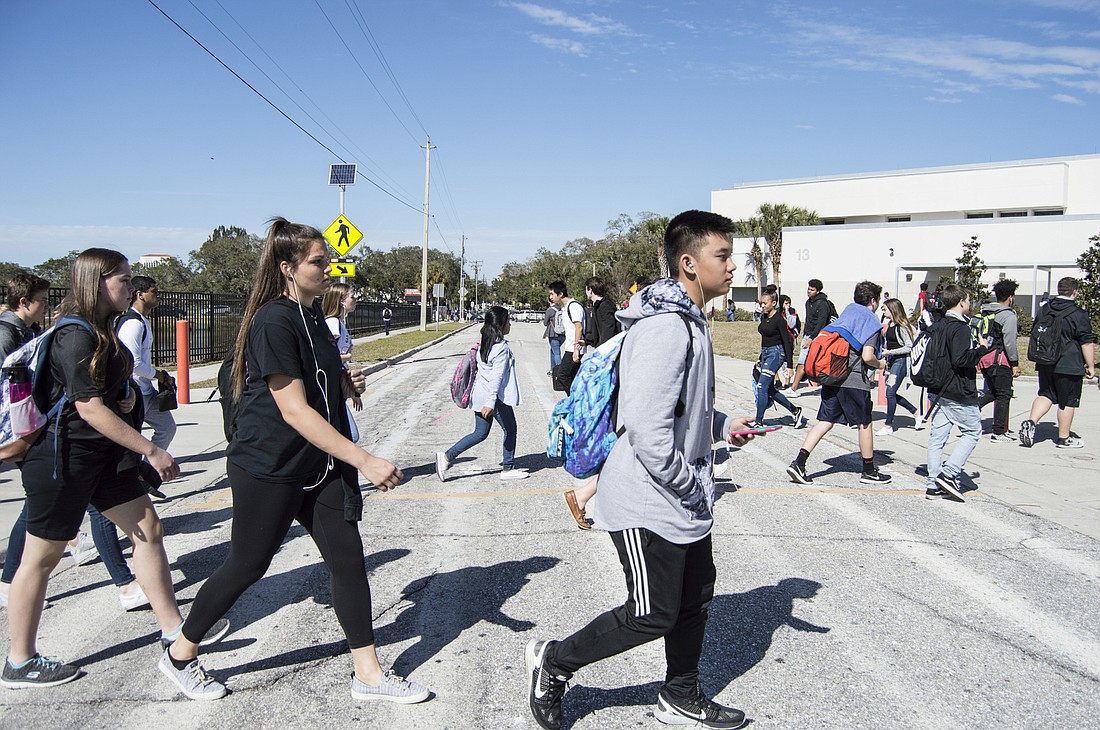- July 26, 2024
-
-
Loading

Loading

Many aspects of school life are returning to normal for the next academic year: students will no longer be required to wear masks, desk shields are coming down and one-way hallways will be a thing of the past in most schools.
Still, though, enrollment will not likely be back to expected levels.
On June 15, school leaders reviewed enrollment projections for the 2021-22 school year, which showed the anticipated number of enrolled students is far lower than initial thoughts — a detail that could factor heavily into the district’s funding.
Early projections show the district will have 43,230 students in the fall, an increase from the end of 2020-21 by about 258 students. However, the projection is still about 920 students below previous projections.
The number of enrolled students directly affects how much funding the district receives from the state.
In the 2020-21 school year, the state issued an emergency order that funded schools based on a projected number of students, not the actual number of enrolled students. During the COVID-19 pandemic, public schools saw numbers fall of students who attended brick-and-mortar school facilities.
The district in 2020-21 school year projected an enrollment of 44,845 but enrolled 43,388 students. The district receives about $8,000 annually for each enrolled student, which means without the executive order, the district would have lost $11.6 million.
The district this year is expecting about $371 million in state and local funding. That’s a reduction of $1.5 million from last year.
Chief Financial Officer Mitsi Corcoran said the base per-student allocation went up by roughly $53 statewide, but a great deal of the increase will go toward paying a required increase in teacher retirement funds.
The district did, however, receive a small increase in the teacher salary allocation. The legislature allocated $500 million to increase the base salary for all teachers to $47,500. The district then provided teachers with an additional 3% raise.
Despite the raise in salary, the district paid less in salaries and benefits for the 2020-21 school year due to teacher vacancies. The district started the year with 34 fewer full-time equivalency teaching spots than normal and several staff vacancies.
After all the calculations, Corcoran said the district can expect to receive about $86 less per student this year in comparison to last year.
However, budget officials say it shouldn’t have too much of an effect on the budget. The district expects to end the current fiscal year with roughly 15% in reserve funds and the 2021-22 year with 11% in reserves.
Assistant Budget Director Christa Curtner said the district will no longer have to transfer funds from the general fund budget to pay for Food and Nutrition Services.
Officials originally projected $1.6 million would need to be transferred to cover the cost of staff. The district kept the same number of food services staff despite lower enrollment. The lower enrollment meant there were fewer meals purchased and less revenue.
Curtner said the department has received federal revenue to help offset the cost for this year and the coming year.
Although the district won’t receive final valuations from the property appraiser until July 1, preliminary reports show that property owners can expect to pay a lower rate in school district taxes in the coming year based on estimated valuations. The local millage rate will be reduced from 3.711 to 3.553 mills.
A mill is equal to $1 for every $1,000 of a property’s taxable value. That mean the owner of a property with a $250,000 taxable value can expect to pay $888 in school taxes.